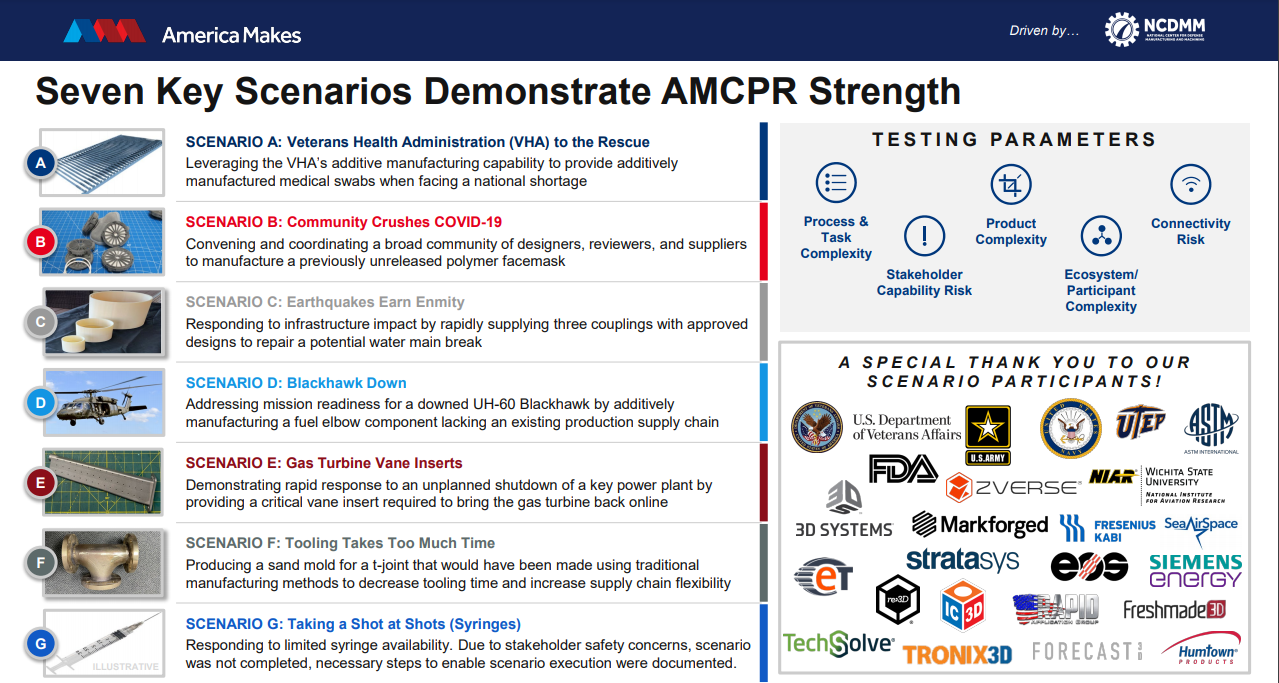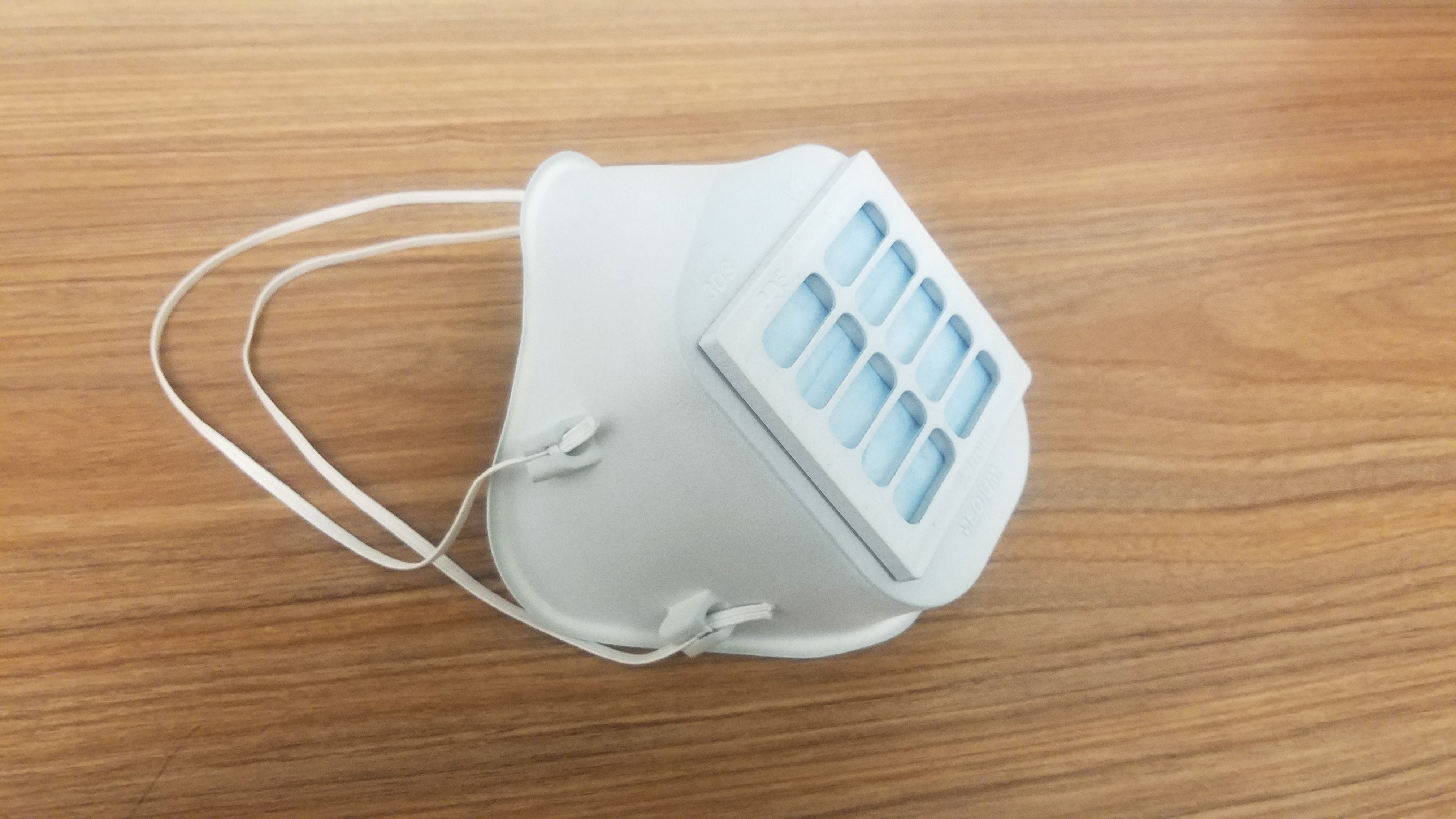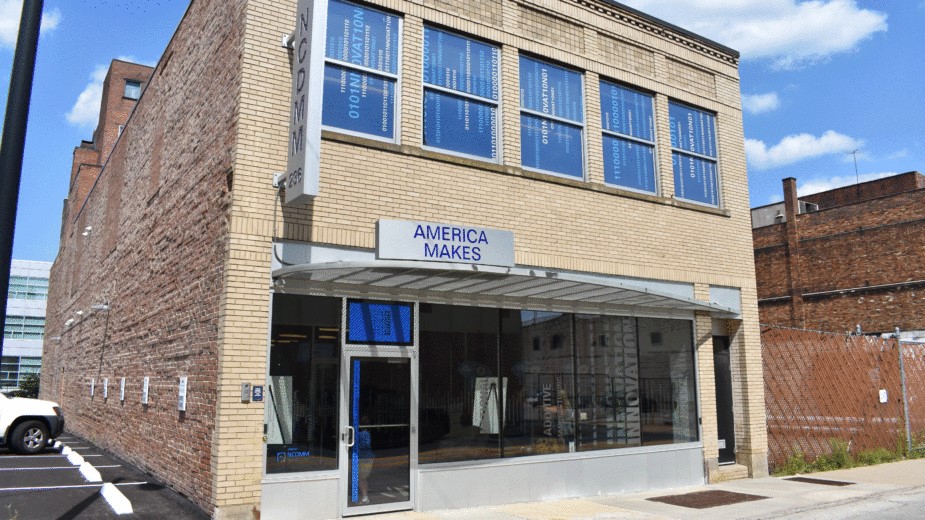US 3D printing national accelerator America Makes has completed a series of crisis scenario tests for its Advanced Manufacturing Crisis Production Response (AMCPR) program, showcasing the role additive manufacturing could play in bolstering supply chains when crises arise in the future.
Born out of America Makes’ Covid-19 response effort, the AMCPR was awarded $4.7 million from the US Department of Defense (DoD) to further expand the program so that it could be applied to a variety of crisis scenarios.
“The Covid-19 pandemic showed the importance of elevating US supply chain resiliency in the national security conversation,” said John Wilczynski, America Makes Executive Director. “The AMCPR program is advancing that conversation by creating a lasting framework to enhance our supply chains.”

Coordinating the Covid-19 approach
When the Covid-19 pandemic arose last year, America Makes embarked upon coordinating the US 3D printing industry’s response to the crisis, particularly in addressing the shortage of personal protective equipment (PPE).
The organization launched an online Exchange portal with the aim of matching manufacturing capabilities with the increased demand for PPE supplies from frontline workers. To achieve this, America Makes worked with the Federal Drug Administration (FDA), the Department of Veteran Affairs, and the National Institutes of Health (NIH) to create a regulatory framework for the safe and efficient production of 3D printed PPE.
As a result of the response effort’s success, America Makes was awarded DoD funding to expand the program so that it could meet the needs of different crisis scenarios.
“The program ultimately will improve US manufacturing coordination, responsiveness, and competitiveness with the goal of preparing the US for the next, unknown supply chain crisis,” Wilczynski continued. “The successful scenario testing of the AMCPR Exchange Portal is the proof of concept that the system works, and additive can be a go-to solution.”

Scenario testing the AMCPR program
The AMCPR program underwent a series of hypothetical scenario tests in order to assess its performance and ability to bolster supply chain resiliency under a variety of circumstances.
America Makes recently welcomed US President Joe Biden’s executive order for mandating a review into the country’s supply chain dependency, and in March Wilczynski applauded the introduction of new bipartisan supply chain legislation by US senators to establish an office of Supply Chain Preparedness. In his statement, Wilczynski seconded the need for a “comprehensive, national approach” to supply chain readiness, in which he sees additive manufacturing playing an important role.
During the scenario testing, the AMCPR program’s processes and Exchange portal’s performance were systematically assessed within seven hypothetical crisis scenarios, including national PPE shortages, the ability of a broad AM community to respond to an immediate product shortage, infrastructure impact from earthquakes, power plant shutdowns, mission readiness for a downed UH-60 Blackhawk helicopter, and decreasing tooling lead times.
For each of the scenarios, the AMCPR Exchange’s end-to-end capabilities were tested and evaluated for design generation, design review, supplier production, and supplier distribution.
Six of the seven scenarios were successful in 3D printing the requested parts, while the seventh scenario, which involved responding to limited syringe availability, was not completed. However, critical path steps to take in future scenario testing for this situation were identified.
A wide range of America Makes members and stakeholders took part in the tests and contributed to identifying current strengths and opportunities to expand the portal’s capabilities. Those involved in the crisis scenario tests involved the likes of 3D Systems, Stratasys, Markforged, ASTM International, EOS, Siemens Energy, alongside multiple universities, research institutions, and government departments.

Scenario testing outcomes
The first scenario involved a shortage of medical devices, specifically nasal swabs. To solve this problem, the scenario participants 3D Systems and the US Department of Veteran Affairs demonstrated how simple, regulated medical parts could be quickly downloaded, printed, and supplied using the AMCPR exchange.
The second hypothetical crisis demanded a new 3D printed facemask from a variety of suppliers. Involved in this task again was the Department of Veteran Affairs, alongside Forecast 3D, Sea Air Space, and Tronix3D. The participants demonstrated the ability to convene and coordinate a broad community of designers, reviewers, and suppliers after an immediate call to action.
The next scenario involved printing and qualifying a stop-gap pipe coupling for a water main break caused by an earthquake, to temporarily restore service. This scenario demonstrated the ability of a diverse set of manufacturers to rapidly supply qualified parts to multiple end users simultaneously using the AMCPR Exchange portal. Those involved included ASTM International, Stratasys, Markforged, The University of Texas at El Paso (UTEP), iC3D, Rapid Application Group, and re:3D.
The fourth scenario presented a situation where a UK-60 Blackhawk helicopter’s mission readiness was diminished due to unavailability of a component, in this case the UH-60 AM Fuel Elbow where the supply chain for this part has ended. To address the problem, the fuel elbow was rapidly redesigned and manufactured out of a new material. Zverse leveraged a legacy 2D print from the US Army to provide a converted 3D model, while the suppliers, 3D Systems and EOS, 3D printed the new fuel elbow component and shipped to the US Army for testing.
The next situation the project participants faced was a key power plant in the Southwestern US faced an unplanned shutdown due to a natural disaster, and were tasked with rapidly redesigning, testing and supplying a legacy vane insert component. During the scenario, Siemens Energy, Stratasys, and Wichita State University’s National Insititute for Aviation Research (NIAR) successfully showcased how the AMPCR Exchange database of parts could be leveraged to rapidly respond to a crisis.
The final successful scenario saw extreme winter storms create a dangerous crack in a plumbing t-joint that supports the core cooling system for a reactor. With no readily available supply for the t-joint, the goal of this task was to test a weather-based crisis scenario in which 3D printing is required to produce tooling that would have typically been made using conventional manufacturing methods. Those involved in this task included TechSolve, Freshmade3D, Humtown Products, and NIAR.
Subscribe to the 3D Printing Industry newsletter for the latest news in additive manufacturing. You can also stay connected by following us on Twitter and liking us on Facebook.
Looking for a career in additive manufacturing? Visit 3D Printing Jobs for a selection of roles in the industry.
Subscribe to our YouTube channel for the latest 3D printing video shorts, reviews and webinar replays.
Featured image shows the America Makes building in Youngstown, Ohio. Photo via America Makes.


